Interview with Spring Member Stephanie Wunderlich
"Personal contact is crucial."
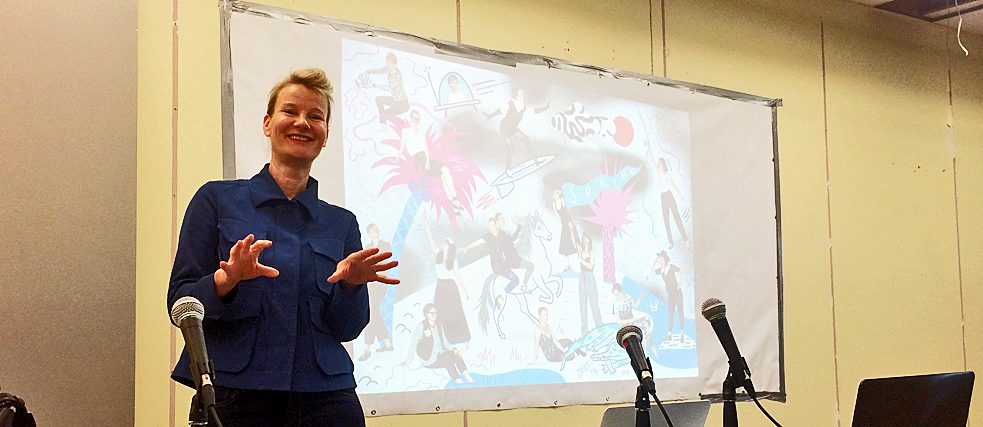
For the 2018 edition of the the Goethe-Institut Toronto invited German illustrator Stephanie Wunderlich. In an interview with Michelle Kay, she tells us about Spring, a German collective of female artists she herself had been a member of for over 10 years and which publishes a yearly issue of their magazine SPRING.
By Michelle Kay
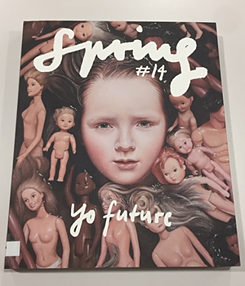 Cover of the Spring-Magazine # 14
| © Isabel Spoerl / Goethe-Institut
Let’s talk about Spring the collective and the magazine. Can you tell me about how you got involved, how long you’ve been working on it and who else is in the collective? What is the planning process for issues like?
Cover of the Spring-Magazine # 14
| © Isabel Spoerl / Goethe-Institut
Let’s talk about Spring the collective and the magazine. Can you tell me about how you got involved, how long you’ve been working on it and who else is in the collective? What is the planning process for issues like?
Ten years ago, Larissa Bertonasco, who has been a member of Spring since the very first issue and whom I shared a studio with at the time, proposed that I become a new member. This is how I got involved with the collective. All important decisions, such as each issue’s themes, coloration and new members are always made democratically. There are no chief editors who have more say than the others.
There are about 14 active Spring members. Of course, over the past 15 years the constellation has changed a bit. When we are working on a new issue, we start by collecting ideas for topics, deciding on custom colors and discussing which artists we want to invite as guests to participate in the issue. We agree on a deadline and take care of booking a gallery to host the launch party and exhibition. During the production process, the Hamburg group and the Berlin group (roughly half of the members live in Hamburg and the other half live in Berlin) meet up from time to time to discuss illustrations and organizational matters. Personal contact and building personal relationships are crucial. Many of us are friends. Such a long and reliable cooperation would not work if it was solely via email contact only. When all the stories are completed, we submit them to our graphic designer who, with our approval, takes care of the issue’s layout and printing.
An important and strong network of female artists
What are Spring's goals as a collective? What are you hoping to express or achieve?Spring showcases an unusual mix of free drawings, illustrations and comics. Our goal is to present an interesting range of visual imagery and narrative styles. With Spring, we are building a creative space where we can publish our own work, free of any demands from customers. We are consciously creating a counterpart to our custom work. This creative playground further feeds our inspiration and attention and, in turn, benefits our day jobs.
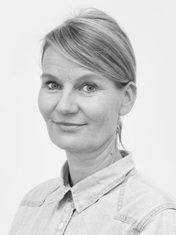 Stephanie Wunderlich
| © privat
Only a few of us earn their living as professional comic illustrators (like Ulli Lust, Barbara Yelin, Birgit Weyhe). Most of the Spring members have full-time jobs as illustrators for editorials and for books ( i.e. Larissa Bertonasco, Katharina Gschwendtner, Katrin Stangl, Carolin Löbbert, Romy Blümel, Stephanie Wunderlich). Moki is a freelance artist.
Stephanie Wunderlich
| © privat
Only a few of us earn their living as professional comic illustrators (like Ulli Lust, Barbara Yelin, Birgit Weyhe). Most of the Spring members have full-time jobs as illustrators for editorials and for books ( i.e. Larissa Bertonasco, Katharina Gschwendtner, Katrin Stangl, Carolin Löbbert, Romy Blümel, Stephanie Wunderlich). Moki is a freelance artist.In addition, Spring is an important and strong network of female artists/illustrators. Fifteen years ago, the founders of Spring noticed that the illustration and comics scene was male-dominated. That is how the idea of a female artist collective came into being. Nowadays, we still find new and talented illustrators in the next generation. Hence, there is no reason to change the woman-only concept.
The power of a visual narrative
In one of your interviews, you talked about using art as a universal language and illustrators are social commentators. How does that translate over to issues such as feminism?For the issue, "The Elephant in the Room", which focused on the topic of role models, we broached a women-oriented or feminist topic. (The group partnered with a group of artists from India and spent time together workshopping and producing the issue.) I think we deliberately avoided this before because we did not want to adhere to clichés (or stereotypes of "women’s topics"). In issue #13, we explored the question, how far are our decisions influenced by society’s expectations? And in how much female role models, patterns and stereotypes can influence our behaviour. With our stories, we were able to get our readers to ponder about and to challenge women to rethink their decisions and their position in society.
When we began working on this issue, we internalized, how powerful a visual narrative can be when it encourages social and political reflection. As a result, we dared to approach topics that were more socially relevant, such as “Yo future” (Environmental issues 2017) and “Work” (2018).
We were very happy that issue #13 was actually published by an Indian publishing house (Zubaan) as a licensed edition. It was important to us also to reach an Indian readership.
Let's talk about TCAF (the Toronto Comic Arts Festival) especially since you are in Toronto for the festival. What have you heard about the festival? Were you familiar with it before? What are you most looking forward to?
Spring members, Ulli Lust and Barbara Yelin, have already attended TCAF as guests of the Goethe-Institut Toronto. They told me it was an inspiring time for them and strongly encouraged me to accept the Goethe-Institut Toronto’s invitation. I had heard of a festival in Toronto once before but my idea of it was pretty vague. Now I am excited to be here and represent Spring, to meet colleagues from abroad and collect many ideas.
What projects are you currently working on?
I just finished my story for this year’s Spring issue about the varied meaning of work for humans. Edition #15, "Work," is now in the production stage.
I usually work on editorial pieces. The time between receiving the assignment and execution is relatively short. Most of the times the message of the piece needs to be clear in only one picture. Working on a story for Spring is different. I can take my time working on it. It’s like taking a relaxing walk.
Stephanie Wunderlich
studied Communication Design at both FH Augsburg and ISIA Urbino and graduated with a degree in communication design. Based in Hamburg she works as a freelance illustrator for international magazines and publishers of books. She also teaches illustration, recently at the University of Applied Science Hamburg. Her favourite medium is paper collage. She creates her illustrations using digital as well as analog techniques (scissors and glue).
Stephanie is a member of the female artist collective, "Spring", which was founded in Hamburg in 2004, and which publishes an annual anthology of comics, illustrations and drawings. Each issue of "Spring Magazine" is dedicated to one particular theme, and features a wide variety of visual narratives.
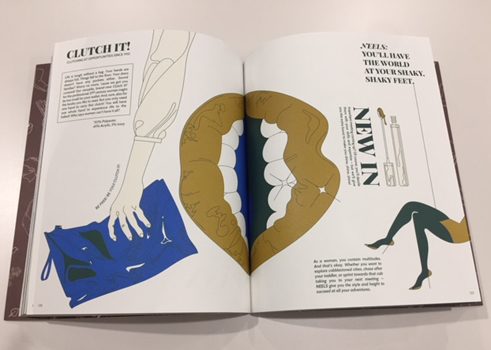
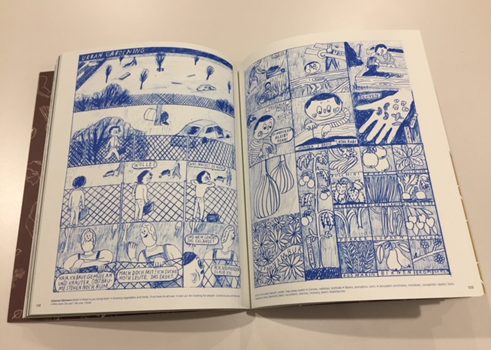
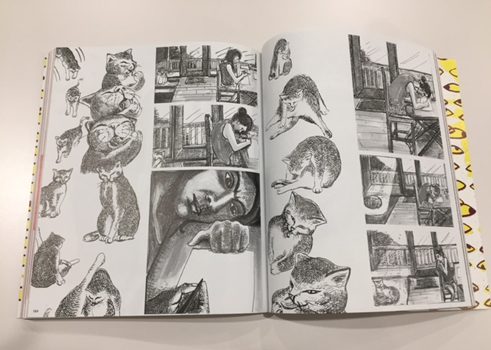
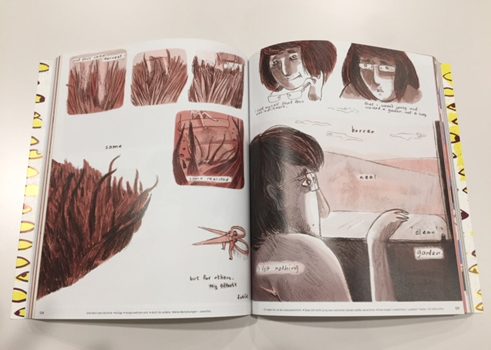
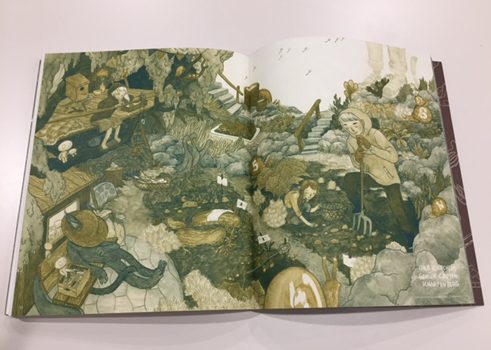
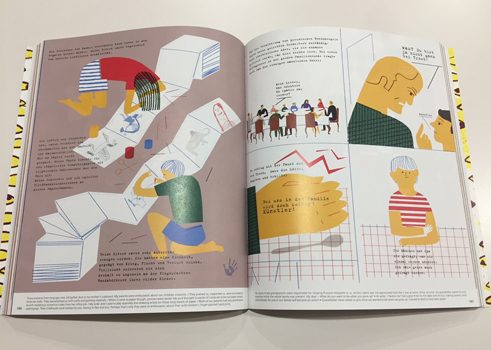
Comments
Comment